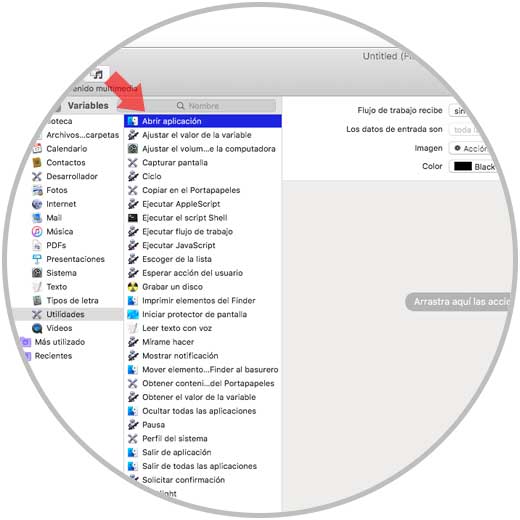

- Mac os open terminal from finder how to#
- Mac os open terminal from finder install#
- Mac os open terminal from finder full#
The whole installer is around 13 GB (it's 12.45 GB for macOS 12.5.6), so it may take some time depending on the speed of your internet. Then tap Download when you're asked whether you want to download macOS Monterey. After it directs you to the App Store, click Get and you'll be brought to the System Preferences page.
Mac os open terminal from finder full#
You can visit Apple's download page to download the full macOS Monterey installer from App Store. Step 1: Download the macOS Monterey installer For example, you can include certain third-party drives or software packages on the ISO file, or pre-configure certain settings of the installer to ensure that the items are installed along with the operating system or save time during the initial setup process.
Mac os open terminal from finder install#
It can be used to install macOS Monterey on a virtual machine (e.g., VirtualBox or VMware) running on a Windows computer or create a bootable USB for upgrading or clean installing macOS Monterey on a Mac.īesides, it's also a convenient way to distribute the installer, particularly when you wish to install macOS Monterey on multiple machines.
Mac os open terminal from finder how to#
How to create macOS Monterey ISO for Virtual Machines on Mac?Ī macOS Monterey ISO file is a kind of disk image that contains all the necessary installation files for macOS Monterey. How to download macOS Monterey ISO for VirtualBox or VMware? If you too want to install macOS Monterey on your computer, it's helpful to download or create the macOS Monterey ISO file, especially if you are using a Windows PC. Click “Terminal” from the main Apple menu.Since its release on October 25, 2021, many users have been attracted to install macOS Monterey due to its exciting new features, such as Universal Control, AirPlay to Mac, Shortcuts, Spatial Audio, Live Text, and more.Quitting the Terminal is straightforward here’s how:

You can promptly end the execution process by hitting the “q” button on your keyboard or with “control + c.” How to Quit Terminal The “ q” command is ideal for exiting commands that run endlessly when executed, like the “top” command. This command will execute until your press “control + c” to go back to the command line interface or quit Terminal. A list of the top actively running apps using the CPU will display, including ports used, their state, memory per app, and more. The information will include CPU, memory, and disk utilization. The “ top” command will deliver your system’s stats inside the Terminal window. This command is irreversible once executed, all the directories and files inside the path you specify will be deleted straight away. The “ rm-R” command removes entire directories containing other directories or files. If, for example, you misnamed a folder, you can rename it using the “mv” command or delete it using the “ rmdir” command, including the path to the directory. The “ rmdir” command allows you to remove a directory created in error. This is ideal if you need to start a new project and use an existing one as the base.

It will execute a copy of all the contents of one folder into a folder specified by you. Just like the English meaning of “ ditto,” this command can be used to do the same thing again. It will move the specified file from its original location to the new location.Įxample: “ mv path/to/new/file/location.” Copy Folder Contents to a New Folder The “ mv” command is for when you want to move a file instead of making a copy of it.


 0 kommentar(er)
0 kommentar(er)
